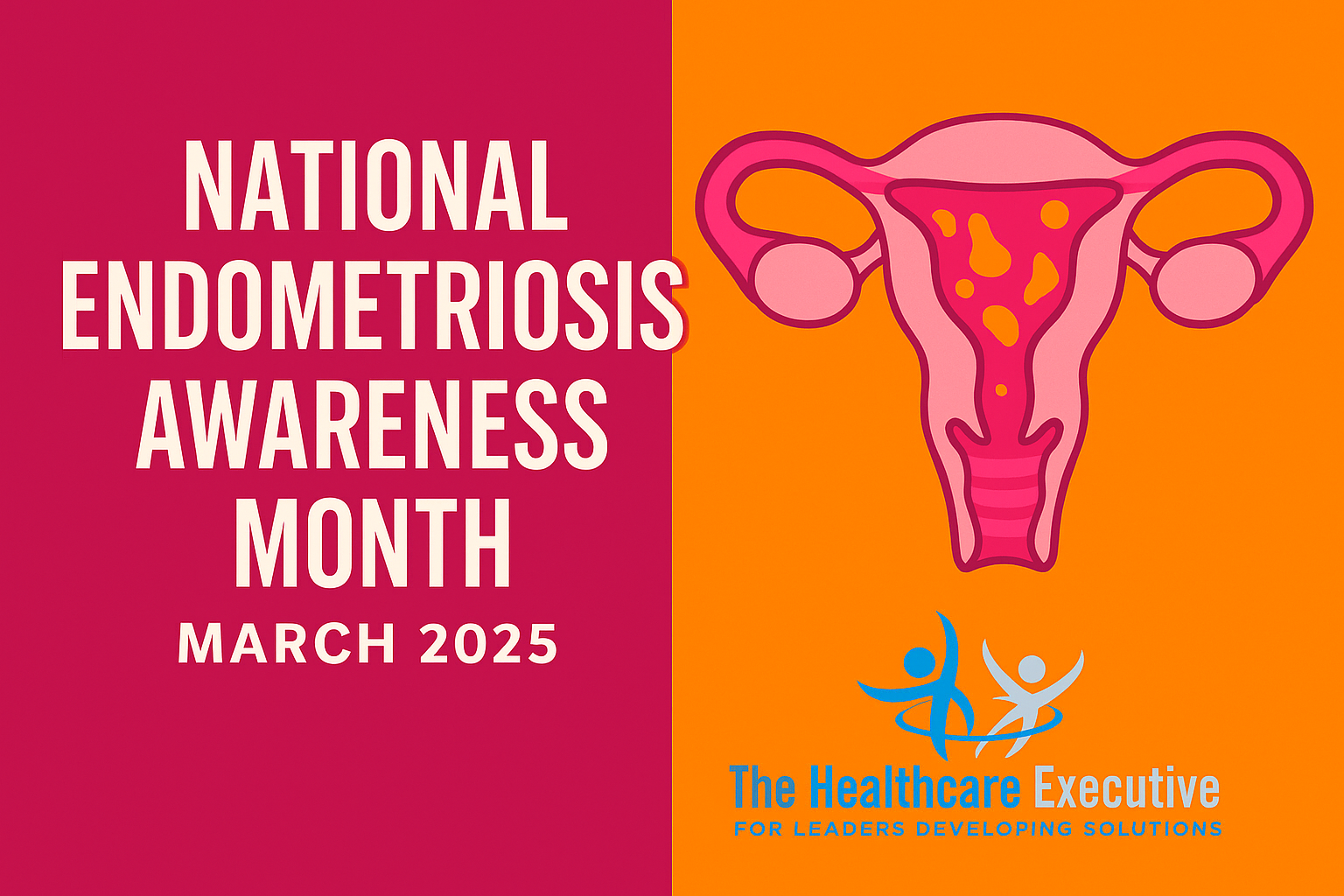National Endometriosis Awareness Month 2025: Prioritizing Diagnostic Equity in Women’s Health

- Posted by Greg Wahlstrom, MBA, HCM
- Posted in Health Observance Calendar
Hospital Leaders Must Confront Delays in Diagnosis and Expand Access to Surgical Expertise
Published: March 4, 2025
March is National Endometriosis Awareness Month, a important observance that sheds light on one of the most underdiagnosed chronic conditions affecting women and people assigned female at birth. Affecting an estimated 1 in 10 women globally, endometriosis causes debilitating pain, fertility challenges, and significant impacts on daily functioning. Despite its prevalence, diagnostic delays average seven to ten years—a gap that hospital leaders must urgently address. At Northwell Health’s Endometriosis Center, executives have introduced a multidisciplinary early screening protocol to speed diagnosis in both primary care and emergency settings. Such programs reduce not only patient distress but long-term healthcare costs associated with disease progression. Hospital executives must take responsibility for building institutional awareness and proactive diagnostic models.
Clinician training remains a critical issue in achieving early detection. Emergency room physicians, gynecologists, and even general practitioners often overlook or misdiagnose symptoms as normal menstrual pain or irritable bowel syndrome. At Brigham and Women’s Center for Endometriosis, specialized staff education includes simulation training, clinical decision pathways, and patient-centered communication protocols. By investing in clinical education, executives demonstrate a commitment to evidence-based medicine and gender equity. Leaders must integrate endometriosis-specific content into existing continuing education platforms and make culturally competent care a performance standard. Training today creates systemic relief tomorrow.
Surgical access is another area where executive attention is urgently needed. Many patients face delays due to the limited number of surgeons with expertise in advanced excision techniques. NewYork-Presbyterian/Columbia University Irving Medical Center has expanded its minimally invasive surgery program with dedicated case teams to improve wait times and outcomes. Executives must evaluate their current surgical pipeline, operating room capacity, and referral systems to eliminate bottlenecks. Expanding partnerships with ambulatory surgical centers and academic institutions may also help meet demand. The long-term burden of unmanaged endometriosis—including infertility and chronic pelvic pain—can be reduced through targeted capacity building.
Health equity must anchor every aspect of an executive response to endometriosis. Black and Hispanic women are disproportionately underdiagnosed or misdiagnosed and less likely to be referred to specialists. Language access, insurance coverage gaps, and provider bias all play roles. The Endometriosis Foundation of America advocates for equitable research participation, culturally sensitive education, and expanded public funding for awareness. Executives must use health observance months to audit equity metrics and close these care gaps across departments. Community partnerships, patient navigation services, and DEI benchmarks should be systematized, not sidelined.
Finally, the psychological toll of endometriosis is often ignored, despite its well-documented impact on mental health and quality of life. Pain-related anxiety, stigma, and social withdrawal can compound suffering if not addressed holistically. At UCSF’s Endometriosis Center, care teams include psychologists and pain specialists to provide whole-person care. Hospital executives should support the integration of behavioral health services within OB/GYN and reproductive health departments. Endometriosis Awareness Month 2025 is more than a campaign—it is a strategic imperative for those shaping the future of equitable, compassionate, and operationally efficient women’s health.
Discover More on Strategic Women’s Health Leadership
Learn how your leadership team can take bold, measurable steps in prioritizing equitable access and timely diagnosis across all women’s health services in our latest executive brief.
Internal Links
- Rebuilding Trust in U.S. Healthcare: A Leadership Blueprint
- The Healthcare Workforce Crisis: Executive Solutions That Actually Work



